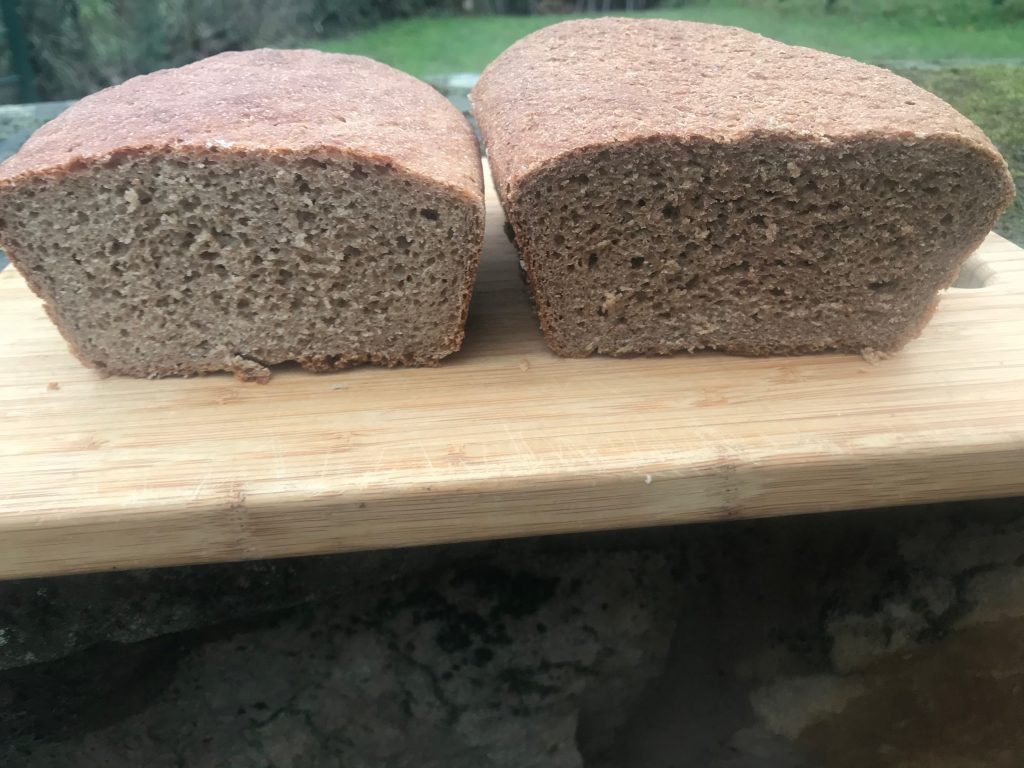Mulika is a modern Group 1 spring wheat. The crop can be planted from November through to April and does well in organic systems with good disease resistance and high yield, known for its high Hagberg Falling Number and protein percentage it is regarded as a good choice for bread making.
The grain was grown organically by Mark and Liz Lea at Green Acres Farm, Shropshire.
The wheat was double milled in my Komo mill, reaching a temperature of 29C (which is the usual temperature for hard wheats in my Komo Mill).
Data
The data for harvest 2020 at Green Acres shows a protein level of 14.3% which makes it one of the higher protein wheats grown on the farm this year. It has a Hagberg Falling Number of 343 which is the highest achieved by the wheat in this year’s harvest.

Performance
The wheat performed well showing good gluten development (NB. freshly milled wheat does not have stable gluten). It required more water than usual, which is as expected because of the higher protein level of this wheat. 72% hydration was required for the wholemeal flour rather than the usual 70%. Its performance will be suited to the baker that requires a higher protein level for their breads.
For the extraction flour: The fine sieving of the flour resulted in an extraction rate of 88%.
Taste
This wheat has not been developed particularly for taste but rather yield and disease resistance. However, it tasted pleasant and with a good balance of flavour.


Is you flour stone ground? Have you used it to make proper fermented sourdough?
Hi Patricia,
Yes it is, the flour I get from Green Acres Farm is milled with a stone mill on the farm. If I have ground it at home with my tabletop mill then it will be stone ground too. I do use it to make sourdough, happy to answer any questions you may have about using stone ground flour or freshly milled flour.
Kath